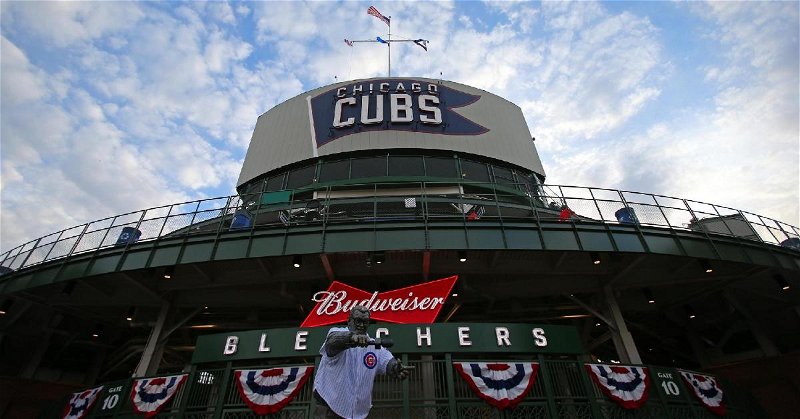
Commentary: Let's make changes to MiLB alignment |
Somewhat out of character for me, I've spent a lot of time lately writing about the minor leagues, MLB's desire for contraction, and the need to realign the junior leagues. For the fans in the small towns without MLB teams, the minors provide them with entertainment and a team to call their own; for the MLB teams that fund them, they're becoming money pits.
Part of the (alleged) reasons for contraction is that many stadiums are in disrepair, or at the very least, less than modern. Some of the reported 42 teams on the chopping block are scrambling like crazy to upgrade facilities, as the proverbial carrot being dangled leads them to believe that modernization may save them. While that may be true in some cases, it's not likely to save them all. While no MLB hopeful wants to lose his spot (or team) due to contraction, there may very well be improvements for those players who play for teams that end up making the cut. Upgraded facilities aren't just for the fans, they'll benefit the players as well, as some of those upgrades will require new equipment and facilities for the players. As I continue to read about the subject, I can only envision the substandard facilities that the Indians were forced to use in the movie Major League. You remember the movie… don't you? The new owner of the Indians is tired of losing money and wants to move the team. If their attendance falls below a certain number, she can do so, but the boys aren't giving up without a fight. In her effort to lower morale, she signs some of the worst players available, all while putting the team in a facility with horrific "amenities."
That seems to be just about where some of the minor leaguers and their respective teams stand today.
Also at issue in this whole mess, is the subject of realignment – this is absolutely a good thing. For the players, it will cut down on travel; for the owners, it will cut travel expenses – in some cases, drastically. Not long ago, I wrote that with the way the minors are constructed now, divisions, leagues, and opponents make little sense. The Iowa Cubs, for example, are currently part of the Pacific League. I don't know about you, but I've been through the state of Iowa a million times when I used to drive a truck, and not once did I ever find one of those pacific coast beaches in Des Moines.
There are currently 160 MiLB franchises, encompassing all levels of the minor league sector. If - rather when – MLB gets its way, that number will shrink to somewhere around 120 teams. That's still an awful lot of teams. If MLB and MiLB want to garner a new fan base, they need to reorganize and realign the minors in a way that makes more sense.
Starting with the 30 Triple-A teams, MLB needs to reorganize them into two leagues with three divisions of five teams in each for the sake of parity. Sound familiar? If they were to do this, each affiliate would belong to a league and division where they would play the same opponents as their MLB counterparts. For the sake of clarity, we'll call the Triple-A league the AL and NL, with an eastern, central, and western division. In some cases, realigning the teams this way would seem like a no-brainer; in other ways (with certain divisions), it'd be a real mess.
The divisions could then realign and break down as follows:
AL East: Norfolk Tides (Orioles), Buffalo Bisons (Blue Jays), Durham Bulls (Rays), Scranton/Wilkes Barr RailRiders (Yankees), and the Pawtucket Red Sox.
AL Central: Rochester Red Wings (Twins), Charlotte Knights (White Sox), Columbus Clippers (Indians), Toledo Mudhens (Detroit), and the Omaha Storm Chasers (Royals). The only team out of geographical whack here is Omaha. The Royals do have a stadium in Burlington, NC, which could be used.
AL West: OK, realigning this division would be a mess. You have the Round Rock Express (Astros), Las Vegas Aviators (A's), Nashville Sounds (Rangers), Salt Lake Bees (Angels), and the Tacoma Rainiers (Mariners). With three of the five teams located in the western 25% of the US, it only makes sense to move Round Rock and Nashville.
The Astros' affiliate (Round Rock) would have to locate and acquire a new stadium, as none of Houston's teams are stationed anywhere close to the western US. In the case of the Nashville Sounds, the Rangers have a facility located in Spokane, Washington.
NL East: Gwinett Stripers (Braves), Fresno Grizzlies (Nationals), Syracuse Mets, Lehigh Valley Iron Pigs (Phillies), and the Wichita Wind Surge (Marlins). Obviously, Fresno and Wichita would have to move east if this plan were to be implemented. Fresno could easily take over the Nationals facility in Harrisburg, PA, and the Marlins affiliate could relocate to the Short-Season Stadium owned by the team in Batavia, NY.
NL Central: Iowa Cubs, Louisville Bats (Reds), Indianapolis Indians (Pirates), Memphis Redbirds (Cardinals), and the San Antonio Missions (Brewers). The Missions would have to move to a location closer to the proximity of the other teams, but Milwaukee has a Single-A team in Appleton, Wisconsin, with what looks to be a suitable stadium.
NL West: Oklahoma City Dodgers, Reno Aces (Diamondbacks), Sacramento River Cats (Giants), Albuquerque Isotopes (Rockies), and the El Paso Chihuahuas (Padres). The only team who'd have to move here would be the Oklahoma City Dodgers, but the parent club also owns a Single-A Advanced facility in Rancho Cucamonga, CA.
The plan isn't perfect, but it would align the Triple-A affiliates divisions and opponents with those of their MLB counterparts. Few teams would need to relocate – if cutting down travel was an issue – and it would keep baseball in 30 of the 160 (soon to be 120) teams who host Minor League Baseball.




